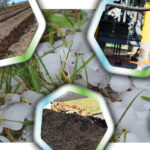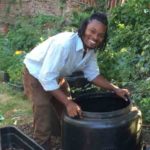
Nora Goldstein
BioCycle July 2018
I participated in the U.S. Food Waste Summit in late June at the Harvard Law School in Cambridge, Massachusetts. The Summit, organized by the Harvard Law School’s Food Law and Policy Clinic and ReFED, was an outgrowth of the 2016 Reduce And Recover: Save Food For People Conference, also held at the law school. It was exciting to see the progress made over the past two years in the “saving food for people space,” including technology innovations, various collaborations, legislative victories, and more.
One thing that hasn’t really changed in two years is the perception that access to organics recycling services, e.g., curbside collection of residential food waste, is a disincentive to food waste prevention and recovery. The theory goes like this: if people know that their food — due, for example, to over purchasing, uneaten leftovers pushed too far back in the fridge, more dining out than expected in a certain week — will be beneficially reused or recycled (e.g., composted, anaerobically digested), they will feel less guilty about wasting that food. So making organics collection convenient is not necessarily viewed as positive in the eyes of the universe of wasted food prevention and recovery to feed people.
So let me tell you what happened to the rhubarb in my refrigerator. The night before I was heading to Massachusetts, I had planned to use that rhubarb to make a fruit cobbler, which I had done with the first half of the stalks. The butter was softening all afternoon. By 9:30 pm, knowing I had to get up early to drive the next morning, I made the executive decision to forego making the cobbler, and put the butter back in the fridge. Having read Dana Gunder’s Waste Free Kitchen Handbook, and spending time on SaveTheFood.com, I knew I should quickly wash the rhubarb, dice it and put it in the freezer for future use. I typically do that with fresh produce, leftovers, etc. that I won’t get to eating since becoming “wasted food” aware.
Alas, I did not. And by the time I got back, the rhubarb had molded and liquefied. So just a few minutes ago, I added the rhubarb, along with the genuine “inedible parts” of my produce, to the backyard composting bin. I was glad I had a home for the rhubarb, as we do not have a municipal food scraps collection and composting program. I did not feel guilty about doing that. I felt wasteful that I hadn’t frozen the rhubarb.
The point of telling this story is that we need to be all hands on deck in outreach, education, technology innovations and more when it comes to reducing the huge volumes of edible food that is grown but not eaten by humans. No one disagrees with that strategy. But the perception that easy access to composting or anaerobic digestion infrastructure is a disincentive to prevention and recovery ignores the reality that food gets wasted and it is a heck of a lot better to recycle it than dispose of that no-longer-edible food in a landfill. Why? Because at the end of the day, we really need the compost and digestate to amend soils to grow more food — and sequester carbon, save water and reduce use of pesticides.
A more productive strategy is to make sure that everyone involved in the food system lifecycle collaborates to ensure that edible food gets fed to people, and that inedible food is fed to animals, composting piles and digesters. Organics collection services and organics recycling facility operators should keep an eye out for significant volumes of edible food in their loads. If excessive edible food is evident, let those who are responsible know, so they can take steps to reduce that volume.
The more we collaborate up and down the food recovery hierarchy, and across the food supply chain, the more we will prevent, recover, and yes, recycle. Let’s not let perceptions get in the way of progress.









